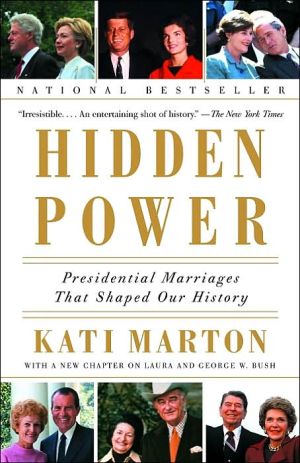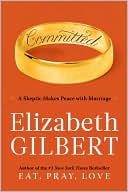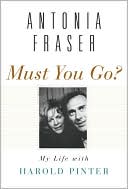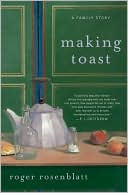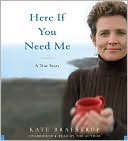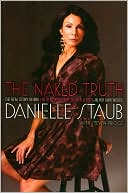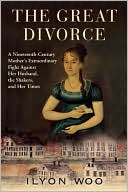Hidden Power: Presidential Marriages That Shaped Our Recent History
Kati Marton’s bestselling Hidden Power is an engrossing look at twelve presidential marriages–from Edith and Woodrow Wilson to Laura and George W. Bush–that have profoundly affected America’s history.\ Marton uncovers the behind-the-scenes dynamics of the ultimate power couples, showing how first ladies have used their privileged access to the president to influence staffing, promote causes, and engage directly in policy-making. Edith Wilson secretly ran the country after Woodrow’s...
Search in google:
Kati Marton’s bestselling Hidden Power is an engrossing look at twelve presidential marriages–from Edith and Woodrow Wilson to Laura and George W. Bush–that have profoundly affected America’s history.Marton uncovers the behind-the-scenes dynamics of the ultimate power couples, showing how first ladies have used their privileged access to the president to influence staffing, promote causes, and engage directly in policy-making. Edith Wilson secretly ran the country after Woodrow’s debilitating stroke. Eleanor Roosevelt was FDR’s moral compass. And Laura Bush, initially shy of any public role, has proven to be the emotional ballast for her husband. Through extensive research and interviews, Marton reveals the substantial–yet often overlooked–legacy of presidential wives, providing insight into the evolution of women’s roles in the twentieth century and vividly depicting the synergy of these unique political partnerships. Publishers Weekly The saying that behind every powerful man is a powerful woman guides Marton's exploration of presidential marriages, from the Wilsons to George W. and Laura Bush. Sometimes Marton points out the obvious: most presidential couples have been middle-aged, and no one got divorced after leaving office. Even in the chapters on individual couples, Marton rehearses themes that will already be familiar to many readers: after Woodrow Wilson had a stroke, his wife Edith ran the country as a sort of deputy president (Marton doesn't bring to this story the kind of originality that Phyllis Lee Levin's does in Edith and Woodrow (Forecasts, Aug. 6) ; Eleanor and Franklin Roosevelt labored under the shadow of FDR's affair with his secretary, Missy LeHand; Bill and Hillary Clinton's marriage was an "unlimited partnership," in which Hillary bailed out her husband time and again. The analytical question that seems to most interest Marton is predictable how do presidential wives balance feminism and tradition? Her answer the balancing act is a tricky one is banal. Surprisingly, the best chapter in which Marton advances an argument that illuminates more than an individual couple is on the Fords. Here, Marton suggests that "the same qualities that made Gerald Ford a good husband" (compassion, the ability to compromise) also made him a mediocre president. Marton has delivered crisply written political gossip those who want buzz will flock to it; those looking for serious history will turn elsewhere. B&w photos. (Sept. 21) Forecast: Despite its light quality, or perhaps because of it, this will be talked about everywhere, aided by a 13-city author tour, appearances on 20/20, Charlie Rose and other national media.Its first printing of 100,000 should sell handsomely. Copyright 2001 Cahners Business Information.
from Chapter 1\ Edith and Woodrow Wilson\ Fools for Love\ I am absolutely dependent on intimate love for the right and free and most effective use of my powers and I know by experience . . . what it costs my work to do without it.\ -Woodrow Wilson to Edith Galt, August 16, 1915\ The dear face opposite me was drawn and lined; and as I sat there watching the dawn break slowly I felt that life would never be the same; that something had broken inside me; and from that hour on I would have to wear a mask-not only to the public but to the one I loved best in the world; for he must never know how ill he was, and I must carry on.\ -Edith Wilson, My Memoir\ On January 1, 1900, two thousand washingtonians braved the bitter cold and falling snow and patiently waited for the White House doors to open for the traditional New Year's reception. They came by trolley and in elegant carriages to mark the dawn of a new century and with it, as the presence of dozens of diplomats in the queue signaled, America's emergence as one of the world's most powerful nations.\ The day also marked the hundredth anniversary of the death of George Washington, but America was now an altogether different country than the fledgling republic bequeathed by Virginia's "First Gentleman." In the past twenty years, seven million Americans had abandoned roots and rural traditions and joined the great urban migration. "America fever" was sweeping the muddy villages and mining towns of Central and Eastern Europe. An entire Italian family could buy steerage tickets from Naples for as little as $15. Half a million immigrants were expected to arrive in New York that year. The combination of the rich land, a fearless, mobile population and breathtaking new technology-from the combine to alternating-current electricity-was allowing America to challenge the rest of the world.\ Inside the White House resided a Victorian man and his withdrawn, sickly wife. William and Ida McKinley, good-natured, well liked and unchallenging, had little interest in the new age. While the country had stretched and grown, the White House had not. It had been built as the home of the president of a small republic. The presidential offices were a rabbit warren of jumbled rooms, alongside the First Family's private quarters. A handful of men in formal morning attire, black cutaway coats, gray-and-black-striped trousers and silk ties jockeyed for space in the overcrowded, ill-lit offices. Down the hall in the presidential bedroom, Ida spent much of her time crocheting. She neither had, nor wished for, her own staff or an office of her own. But the American people felt close to their president, who was still accessible to citizens. When he was in residence in the White House, hundreds of them arrived every weekday, expecting to meet him.\ It would take another year and an assassin's bullet to bring to power the first twentieth-century president, Theodore Roosevelt. Roosevelt was not content for the United States to be the world's economic giant; his sights were set on global military and diplomatic might. Colorful and ebullient, he and his coolly confident second wife, Edith, were the first modern presidential couple. They and their six children filled the mansion with the boisterousness associated with the family. Roosevelt decreed that henceforth the Executive Mansion would be called the White House, a name he considered less stuffy and more in line with the democratic image he intended to convey. Edith, meanwhile, began to institutionalize the office of first lady. She persuaded Congress to finance the mansion's modernization, adding the West Wing and-for the first time-allocating space for the first lady's offices. She hired the first full-time White House social secretary. Edith ran the White House with the ease and detachment of a born chatelaine, though she treated the public and political aspects of the role with aristocratic disinterest. Nevertheless, in both style and substance, Edith and Theodore Roosevelt virtually initiated the ascendancy of an imperial presidency. Though Edith did not personally make use of the first lady's own pulpit, she helped lay the foundation for her successors. Another Roosevelt would take it into territory Edith never could have imagined.\ Helen Herron Taft, the wife of President William Howard Taft, who succeeded Roosevelt, achieved a number of breakthroughs as first lady between 1909 and 1913. She was the first woman to be allowed a seat within the bar of the Supreme Court, the first to publish her memoirs and the first to be buried at Arlington National Cemetery. But her historic role is overshadowed by the second Mrs. Woodrow Wilson, Edith Bolling Galt Wilson, with whom this narrative of marriage and power truly begins.\ Edith Wilson became first lady during a period when the inherent inequality between men and women-society's patriarchal nature-was beginning to be questioned. Since the 1890s American women made up one-third of college students and more than one-third of professional workers. Edith, however, seemed content with the crumbs of education reserved for a Victorian woman. She wanted no part of the generation of college-educated women who were forming local suffrage associations and going door-to-door to enlist support. She would have found repellent Theodore Dreiser's Sister Carrie, which sparked a national scandal. So great was the uproar caused by this story of a country girl who uses sex to climb out of poverty that the publisher was forced to withdraw the book after selling only 456 copies. Another book, What a Young Husband Ought to Know, fared better. The book advised men that "the sexual impulse in the male . . . marches like a mighty conqueror, arousing and marshaling the mightiest human forces [leading to] the attainment of the world's greatest and grandest achievement in art, in letters, in inventions, in philosophy, in philanthropy, and in every effort that is to secure the universal blessing of mankind." The book went on to assure readers that with patience and self-control, husbands could teach their wives to accept sex as a necessary hardship on the road to motherhood.\ Edith willingly accepted the role her nineteenth-century southern upbringing assigned to her. She embraced the Victorian feminine ideal of the virtuous, compliant and passive child/woman. She proudly proclaimed both her disapproval of women she called "devils in the workhouse" and her adherence to women's subservience to men. She called Woodrow Wilson "My Lord and Master" and he called her "Little Girl"-not for her the nascent female solidarity movement. Yet no presidential wife ever wielded more real power than she did, the first lady who said she wished only to be a good wife.\ The Wilsons' story is perhaps the most poignant in the chronicles of presidential marriages, and among the most controversial. In rapid succession it encompassed death, bereavement, unexpected bliss and sudden physical decline. It is also the story of an astonishing White House cover-up in which the first lady was the main perpetrator. At a time when American women still could not vote, rarely held jobs beyond that of a domestic or a grade-school teacher, a woman ran the White House and the executive branch. Woodrow and Edith embody the White House's greatest love story, one that had the most tragic outcome for the nation and the world.\ No cement barriers or electric fences imprisoned the White House's residents in the early years of the century. At first glance, it was just a very large house in the heart of a medium-sized city. Until the 1860s, Washington had remained a winter outpost where politicians converged to debate a handful of subjects not controlled by the states. Humidity drove residents away for the summer. New York was the country's financial capital, Boston its cultural mecca. But the Civil War had changed Washington, as it became the hub of wartime operations. "Slowly," historian Henry Adams wrote, "a certain society had built itself up about the Government. Houses had been opened and there was much dining; much calling; much leaving of cards."\ In the waning years of this era, Woodrow Wilson, a man past his middle age, and Edith Bolling Galt, a woman well into hers, fell in love and carried on an ardent affair in the White House.\ The fifty-nine-year-old president was widowed in 1914, during the second year of his first term. Ellen Axson Wilson's sudden death coincided almost exactly with the outbreak of World War I, and the convergence of the two events shattered Wilson's well-ordered world. His famously stern demeanor masked a passionate and emotionally needy man. It is hard to imagine an isolation greater than the one that fell over him, suddenly alone in that house. Wilson had always preferred the company of women to that of politicians. His daughter Nell recalled, "Father enjoyed the society of women, especially if they were what he called 'charming and conversable.' " His first wife and daughters had been the core of his existence. "My heart has somehow been stricken dumb . . . ," Wilson wrote at the time of Ellen's death. "She was beyond comparison the deepest, truest, noblest lover I ever knew." The following year he would marry again.\ In March 1915, Edith Galt recalled later, "I turned a corner and met my fate." Invited to tea at the White House by a cousin of the president, she stepped off an elevator and ran into Wilson. Edith would later revealingly recall the encounter primarily in sartorial terms. How fortunate, she wrote, that she had "worn a smart black tailored suit which Worth had made for me in Paris and a tricot hat which I thought completed a very good looking ensemble."\ Wilson was immediately smitten. Invitations to dinner and hand-delivered letters from the White House to her town house soon crossed Washington almost daily. So did shipments of Edith's favorite flower, orchids. "The orchids carried a certain significance," White House chief usher Irwin Hoover recalled, "and when she appeared it would always be with just one of them, worn high on the left shoulder."\ Two hundred and fifty surviving letters chronicle their love affair in remarkable detail. They form an indispensable window into the passionate courtship and the simultaneous entry of the United States into world affairs. "My dear Mrs. Galt," Wilson wrote on April 28, 1915, "I have ordered a copy of Hamerton's Round My House. . . . I hope it will give you pleasure-you have given me so much! If it rains this evening would it be any pleasure for you to come around and have a little reading-and if it does not rain, are you game for another ride?"\ On the surface, they seemed almost bizarrely unsuited. At forty-two, she was tall and buxom. Wilson was ramrod straight and thin as a rake. His face was long, his features sharply chiseled and lined. Her face was smooth, her cheeks full. Where she was impulsive, he was logical and loved elaborate argument. Where he was rational and careful, she was jealous, self-indulgent, intuitive, judgmental and seemingly fearless. He was a scholar who loved the company of books and, at the same time, a deeply moral man who believed America must be an example to other nations. Edith was interested primarily in travel and fashion. A substantial portion of her memoirs is devoted to descriptions of what she wore to which historic event. Politics, she thought, was a bore.\ But deeper ties pulled Woodrow and Edith together. Both were Virginians, Edith the granddaughter of a slaveowner, the child of once prosperous gentry. Both were enthralled by the romance and the mythology of the Old South. As a little boy, Wilson had seen Robert E. Lee\ pass through Atlanta after the surrender. Though he had no southern ancestry, Wilson once said that the South was the one place on earth where nothing had to be explained to him. Edith shared this powerful connection to land and place and spoke with a soft southern lilt that Woodrow admired. Left financially independent by her first husband, she combined traditional southern charm with the surface worldliness of a well-traveled woman. With neither a husband nor children to look after, Edith was a free spirit, with the seductive air of a much younger woman.\ Events in Europe intensified the courtship. Wilson was under tremendous pressure during those early months of 1915. The Kaiser's army had launched gas warfare against the French and British. Germany warned American travelers that if they sailed on British ships, they did so "at their own risk." In his letters to Ethel, Wilson shared his innermost thoughts. "Here stands your friend, a longing man, in the midst of a world's affairs-a world that knows nothing of the heart he has shown you. . . . Will you come to him sometime without reserve and make his strength complete?"\ On May 4, 1915, Wilson took Edith onto the south portico of the White House and, drawing his chair close to hers in the chilly air, told her he loved her and asked for her hand in marriage. Feigning shock, as her nineteenth-century upbringing prescribed for such a sudden proposal, Edith turned him down. "You cannot love me," she wrote him that same night, "for you really don't know me, and it is less than a year since your wife died."\ But she kept the courtship going, adding, "I am a woman-and the thought that you have need of me is sweet!" Still, she seemed to shun her suitor's more explicit physical advances. She told him that her first marriage had been "incomplete." Her reserve only enhanced his zeal. "For God's sakes," he wrote her, "try to find out whether you really love me or not."\ The presidency was a powerful courtship tool for Wilson. He made Edith feel that she shared the burden of the office. During the very week Woodrow first proposed marriage, on May 7, 1915, German submarines torpedoed the great British liner Lusitania, killing 1,200 civilians, including 128 Americans. "I need you," the president wrote two days later, "as a boy needs his sweetheart and a strong man his helpmate and heart's comrade. . . . Do you think that it is an accident that we found one another at this time of my special need and that it meant nothing that we recognized one another so immediately and so joyously? . . . I hope you will think of me tonight. I shall be working on my speech of tomorrow evening and on our note to Germany. Every sentence of both would be freighted with greater force and meaning if I could feel that your mind and heart were keeping me company." That night, in what some historians have called "a state of ecstasy," the president gave one of his most powerful speeches.\ On May 10, Edith wrote Woodrow that his "wonderful love can quicken that which has lain dead so long within me." As American neutrality hung in the balance, the president personally typed a letter of protest to the German government. The same day he wrote his beloved. "And, oh, I have needed you tonight, my sweet Edith! What a touch of your hand and a look into your eyes would have meant to me of strength and steadfastness as I made the final decision as to what I should say to Germany."
Introduction31Edith and Woodrow Wilson: Fools for Love132Eleanor and Franklin Roosevelt: The Partnership That Changed the World453Bess and Harry Truman: The Good Husband884Jacqueline and John F. Kennedy: A Marriage All the Same1045Lady Bird and Lyndon Johnson: The Singular Object of Their Affection1376Pat and Richard Nixon: Misalliance1717Betty and Gerald Ford: Ordinary People1998Rosalynn and Jimmy Carter: Virtue Unrewarded2159Nancy and Ronald Reagan: Virtually Perfect24410Barbara and George Bush: Mother Knows Best27411Hillary and Bill Clinton: Unlimited Partnership30612Laura and George W. Bush: Transformed by History351Notes365Acknowledgments393Photo Credits395Index397
\ From Barnes & NobleThe Barnes & Noble Review\ Ever wonder about life behind closed doors at the White House? Or the unknown power wielded by first ladies? Kati Marton's Hidden Power: Presidential Marriages That Shaped Our Recent History shows us how presidential marriages often make for gripping stories. Hard to put down, this is a book that goes well beyond slick portraits and invented lives. \ The White House has always held its secrets. But we learn from Hidden Power that 20th-century American presidential politics is no place for the squeamish. Extraordinary women have needed strength and courage to survive, thrive, and grow through the ordeal.\ Marton takes on 12 administrations -- from Wilson to Bush the Elder -- sharing stories that range from that of antifeminist Edith Wilson, who literally ruled the nation behind closed doors as her husband lay ill, to the women who have had to deal with presidential infidelity as a matter of course: Eleanor Roosevelt, Jackie Kennedy, Lady Bird Johnson, and Hillary Clinton. Each of the four first ladies dealt with it differently, and each went on to forge her own legacy and earn our respect.\ The most conventional story of the 12 turns out to be that of the Trumans, who remained true to their middle-class roots. The most inspiring is that of Eleanor Roosevelt, who represents for many a pioneer feminist whose work and contribution inspired generations of women who followed her. The saddest is the wretched story of the Nixon marriage, and Pat Nixon's virtual abandonment by a man married only to politics and power. The stories we know best are the Kennedy and Clinton tales; although in this context they seem less like aberrations and more like representations of a "normal" virus that infects presidential politics in America.\ Hidden Power is well written, balanced, and a great read, making life in the White House seem less a dream to pursue than a nightmare sane folks should avoid at all costs. Elena Simon\ \ \ \ \ \ Publishers WeeklyThe saying that behind every powerful man is a powerful woman guides Marton's exploration of presidential marriages, from the Wilsons to George W. and Laura Bush. Sometimes Marton points out the obvious: most presidential couples have been middle-aged, and no one got divorced after leaving office. Even in the chapters on individual couples, Marton rehearses themes that will already be familiar to many readers: after Woodrow Wilson had a stroke, his wife Edith ran the country as a sort of deputy president (Marton doesn't bring to this story the kind of originality that Phyllis Lee Levin's does in Edith and Woodrow (Forecasts, Aug. 6) ; Eleanor and Franklin Roosevelt labored under the shadow of FDR's affair with his secretary, Missy LeHand; Bill and Hillary Clinton's marriage was an "unlimited partnership," in which Hillary bailed out her husband time and again. The analytical question that seems to most interest Marton is predictable how do presidential wives balance feminism and tradition? Her answer the balancing act is a tricky one is banal. Surprisingly, the best chapter in which Marton advances an argument that illuminates more than an individual couple is on the Fords. Here, Marton suggests that "the same qualities that made Gerald Ford a good husband" (compassion, the ability to compromise) also made him a mediocre president. Marton has delivered crisply written political gossip those who want buzz will flock to it; those looking for serious history will turn elsewhere. B&w photos. (Sept. 21) Forecast: Despite its light quality, or perhaps because of it, this will be talked about everywhere, aided by a 13-city author tour, appearances on 20/20, Charlie Rose and other national media.Its first printing of 100,000 should sell handsomely. Copyright 2001 Cahners Business Information.\ \ \ Library JournalWith this thoughtful rumination, journalist Marton augments the proliferating literature on the position and person of the First Lady. Marton examines 11 of the 20th-century presidential couples (the Wilsons, the Franklin Roosevelts, the Trumans, the Kennedys, and the seven couples that followed), relying chiefly on interviews, oral histories, and secondary sources. Ultimately, the reader comes away with the sense that the First Lady has confronted the same problem faced by every other 20th-century American woman, albeit writ large: however she balances the demands of her family and her "job," she isn't seen as getting it quite right. The First Lady, however, gets ragged on not just by her in-laws or her neighbors but also by the national press. Much of the material Marton includes has appeared elsewhere, but her commentary is insightful. The portrayals of Woodrow Wilson as a passionate lover, Bess Truman as selfish, small-minded, and mean, and Pat Nixon as isolated and depressed, are vivid. Recommended for public libraries. [Previewed in Prepub Alert, LJ 5/15/01.] Cynthia Harrison, George Washington Univ., Washington, DC Copyright 2001 Cahners Business Information.\ \
